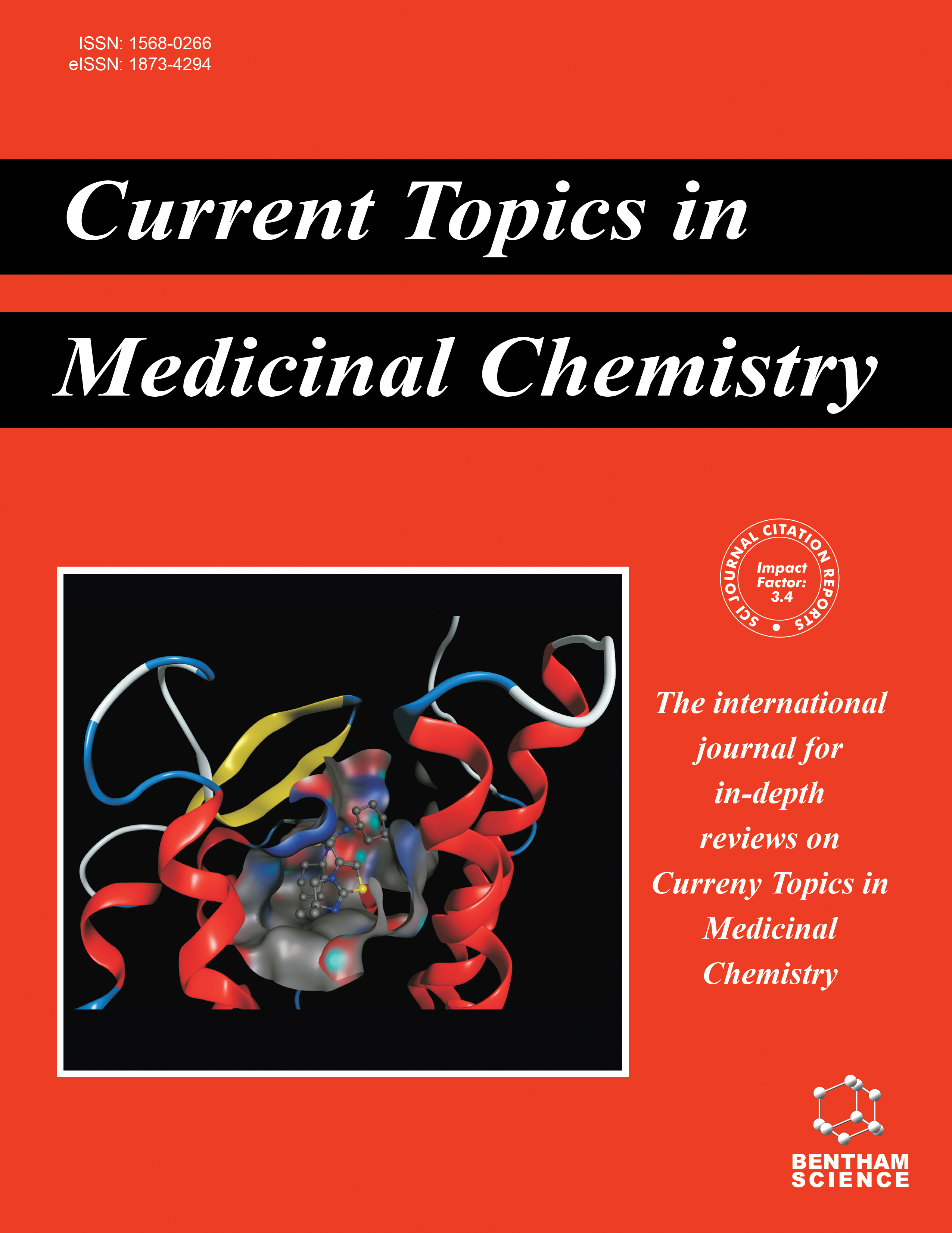- Home
- A-Z Publications
- Current Topics in Medicinal Chemistry
- Previous Issues
- Volume 16, Issue 14, 2016
Current Topics in Medicinal Chemistry - Volume 16, Issue 14, 2016
Volume 16, Issue 14, 2016
-
-
Cardiac Biomarkers in the Identification of Future Risk in Chronic Obstructive Pulmonary Disease
More LessAuthors: Kathleen Jahn, Eleni Papakonstantinou and Daiana StolzChronic obstructive pulmonary disease (COPD) is a common and disabling disease and the third leading cause of global mortality behind ischemic heart disease and stroke. Acute exacerbations of COPD accelerate lung function decline affecting the quality of life of COPD patients and moreover, remain the major contributors to morbidity and mortality of these patients. Cardiovascular comorbidities are prevalent in COPD patients Read More
-
-
-
Methodological Issues and Possible Clinical Implications for Exhaled Breath Condensate pH in Asthma
More LessAuthors: Andras Bikov and Ildiko HorvathExhaled breath condensate (EBC) pH is a commonly studied biomarker which represents the acidity of the whole airway tract, including the lower and upper airways as well as oral cavity. Because neat, unprocessed EBC pH can be affected by environmental and end-tidal carbon dioxide, two further reproducible techniques have been developed to measure condensate acidity with several methodological, pathophysiological a Read More
-
-
-
Biomarkers in the Management of Difficult Asthma
More LessAuthors: Florence Schleich, Demarche Sophie and Louis RenaudDifficult asthma is a heterogeneous disease of the airways including various types of bronchial inflammation and various degrees of airway remodeling. Therapeutic response of severe asthmatics can be predicted by the use of biomarkers of Type2-high or Type2-low inflammation. Based on sputum cell analysis, four inflammatory phenotypes have been described. As induced sputum is timeconsuming and expensive techni Read More
-
-
-
Surfactant Proteins in Smoking-Related Lung Disease
More LessPulmonary surfactant is a highly surface-active mixture of proteins and lipids that is synthesized and secreted in the alveoli by type II epithelial cells and is found in the fluid lining the alveolar surface. The protein part of surfactant constitutes two hydrophilic proteins (SP-A and SP-D) that regulate surfactant metabolism and have immunologic functions, and two hydrophobic proteins (SP-B and SP-C), which play a direct role in the or Read More
-
-
-
Phenotyping and Endotyping Asthma Based on Biomarkers
More LessAuthors: Fotis Perlikos, Giorgos Hillas and Stelios LoukidesAsthma is a chronic inflammatory airways disorder mainly characterized by heterogeneity. A phenotype is defined as a group of patients that present similar clinically observable characteristics, without establishing a direct etiologic relationship with a distinct pathophysiologic mechanism. An endotype, on the other hand, describes a subgroup that shares the same pathophysiologic processes that lead to the development, t Read More
-
-
-
Biomarkers in the Evaluation and Management of Idiopathic Pulmonary Fibrosis
More LessAuthors: Argyris Tzouvelekis, Jose Herazo-Maya, Koji Sakamoto and Demosthenes BourosIdiopathic Pulmonary Fibrosis (IPF) is a chronic, progressive, debilitating disease of unknown etiology and a median survival from diagnosis of 3-5 years. Despite extensive research efforts, its etiology in humans still remains largely unknown, and no curative drug therapies are available. With a gradually increasing worldwide incidence, IPF still presents a major challenge in clinical research due to its appreciable heterogeneity a Read More
-
-
-
Vascular Biomarkers in Asthma and COPD
More LessAuthors: Petros Bakakos, George Patentalakis and Alberto PapiBronchial asthma and chronic obstructive pulmonary disease (COPD) remain a global health problem with significant morbidity and mortality. The changes in bronchial microvasculature that occurin asthma and COPD contribute to airway wall remodeling. Angiogenesis seems to be more prevalent in asthma and vasodilatation seemsmore relevant in COPD while vascular leak is present in both diseases. Recently, there has Read More
-
-
-
Electronic Nose and Exhaled Breath NMR-based Metabolomics Applications in Airways Disease
More LessBreathomics, the multidimensional molecular analysis of exhaled breath, includes analysis of exhaled breath with gas-chromatography/mass spectrometry (GC/MS) and electronic noses (e-noses), and metabolomics of exhaled breath condensate (EBC), a non-invasive technique which provides information on the composition of airway lining fluid, generally by high-resolution nuclear magnetic resonance (NMR) spectrosc Read More
-
-
-
The Role of Flow-Independent Exhaled Nitric Oxide Parameters in the Assessment of Airway Diseases
More LessAuthors: Emmanouil Paraskakis, Eleni Vergadi, Athanasios Chatzimichael and Andrew BushNitric oxide (NO), the first gas known to act as a biological messenger, is one of the most widely studied free radical/gas in medicine, both for its biological function and therapeutic applications. The measurement of endogenous NO in exhaled air is widely used in the evaluation of lung disorders. Partitioning of exhaled nitric oxide (eNO) is of increasing interest because of the additional information about lung pathology a Read More
-
Volumes & issues
-
Volume 25 (2025)
-
Volume 24 (2024)
-
Volume 23 (2023)
-
Volume 22 (2022)
-
Volume 21 (2021)
-
Volume 20 (2020)
-
Volume 19 (2019)
-
Volume 18 (2018)
-
Volume 17 (2017)
-
Volume 16 (2016)
-
Volume 15 (2015)
-
Volume 14 (2014)
-
Volume 13 (2013)
-
Volume 12 (2012)
-
Volume 11 (2011)
-
Volume 10 (2010)
-
Volume 9 (2009)
-
Volume 8 (2008)
-
Volume 7 (2007)
-
Volume 6 (2006)
-
Volume 5 (2005)
-
Volume 4 (2004)
-
Volume 3 (2003)
-
Volume 2 (2002)
-
Volume 1 (2001)
Most Read This Month
Article
content/journals/ctmc
Journal
10
5
false
en


